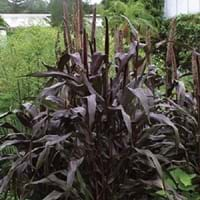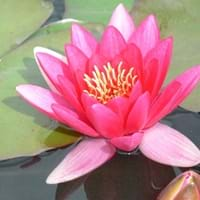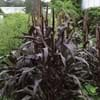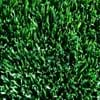Life Span
Annual and Perennial
Perennial
Origin
Africa
Hybrid origin
Types
Not Available
Not Available
Habitat
Sunny Edge, Warmer regions
Ponds
USDA Hardiness Zone
8-11
6-10
AHS Heat Zone
12 - 8
10-3
Sunset Zone
8, 9, 10, 14, 15, 16, 17, 18, 19, 20, 21, 22, 23, 24
21,22
Habit
Upright/Erect
Spreading
Minimum Height
Not Available
Flower Color
Brown, Purple, Purplish-black
Yellow, Orange, Light Yellow, Gold, Peach, Orange Red, Dark Salmon, Bronze
Flower Color Modifier
Bicolor
Multi-Color
Fruit Color
Brown, Cream
Green, Not Available
Leaf Color in Spring
Purple, Dark Green, Burgundy
Green, Sienna
Leaf Color in Summer
Light Green
Green, Sienna
Leaf Color in Fall
Purple, Dark Green, Burgundy
Green, Sienna
Leaf Color in Winter
Not Available
Not Available
Leaf Shape
Long Linear
Round
Plant Season
Spring, Summer, Fall
Summer, Fall
Sunlight
Full Sun
Full Sun, Partial Sun
Growth Rate
Very Fast
Fast
Type of Soil
Loam, Sand
Clay, Loam, Sand
The pH of Soil
Neutral, Alkaline
Neutral
Soil Drainage
Well drained
Poorly Drained
Bloom Time
Summer, Late Summer, Early Fall, Fall
Summer
Tolerances
Not Available
Wet Site
Where to Plant?
Container, Ground, Pot
In Water
How to Plant?
Seedlings
Stem Planting
Plant Maintenance
Medium
Medium
Watering Requirements
Requires regular watering
Plant grows in water
In Summer
Lots of watering
Lots of watering
In Spring
Moderate
Moderate
In Winter
Average Water
Average Water
Soil pH
Neutral, Alkaline
Neutral
Soil Type
Loam, Sand
Clay, Loam, Sand
Soil Drainage Capacity
Well drained
Poorly Drained
Sun Exposure
Full Sun
Full Sun, Partial Sun
Pruning
Prune in winter, Remove damaged leaves, Remove dead branches, Remove dead leaves
Remove damaged leaves, Remove dead branches, Remove dead leaves
Fertilizers
15-0-15, All-Purpose Liquid Fertilizer
All-Purpose Liquid Fertilizer
Pests and Diseases
Alternaria Leaf Spot, eyespot, Red blotch
Not Available
Plant Tolerance
Deer resistant, Drought
Drought
Flower Petal Number
Single
Single
Foliage Texture
Coarse
Coarse
Foliage Sheen
Not Available
Glossy
Self-Sowing
Yes
Not Available
Attracts
Aphids, Bees, Birds
Fishes
Allergy
Unknown
Not Available
Aesthetic Uses
along a porch, deck or patio, Beautification, Informal Hedge, Mixed Border, Showy Purposes, Wild gardens
Showy Purposes, Water gardening
Beauty Benefits
No Beauty Benefits, Not Available
Not Available
Environmental Uses
Air purification
Air purification
Medicinal Uses
Not Available
Not Available
Part of Plant Used
Branch, Flowering Tips, Whole plant
Leaves, Root, Stem
Other Uses
Beneficial species for attracting pollinators, repels deer
Culinary use, Used as Ornamental plant, Used in herbal medicines
Used As Indoor Plant
No
Yes
Used As Outdoor Plant
Yes
Yes
Garden Design
Bedding Plant, Container, Cutflower, Dried Flower/Everlasting, Mixed Border
Container, Cutflower, Water Gardens
Botanical Name
PENNISETUM glaucum 'purple millet'
NYMPHAEA 'Andreana'
Common Name
Millet, Pearl Millet
Hardy Waterlily
In Hindi
purple millet
Hardy Waterlily
In German
purple millet
Hardy Waterlily
In French
millet pourpre
Hardy Waterlily
In Spanish
purple millet
Hardy Waterlily
In Greek
purple millet
Hardy Waterlily
In Portuguese
purple millet
Hardy Waterlily
In Polish
purple millet
Hardy Waterlily
In Latin
purple millet
Hardy Waterlily
Phylum
Magnoliophyta
Magnoliophyta
Class
Liliopsida
Magnoliopsida
Order
Cyperales
Nymphaeales
Family
Poaceae
Nymphaeaceae
Genus
Pennisetum
Nymphaea
Clade
Angiosperms, Commelinids, Monocots
Angiosperms
Tribe
Paniceae
Not Available
Subfamily
Panicoideae
Not Available
Number of Species
Not Available
Not Available
Properties of Purple Millet and Hardy Waterlily
Wondering what are the properties of Purple Millet and Hardy Waterlily? We provide you with everything About Purple Millet and Hardy Waterlily. Purple Millet doesn't have thorns and Hardy Waterlily doesn't have thorns. Also Purple Millet does not have fragrant flowers. Purple Millet has allergic reactions like Unknown and Hardy Waterlily has allergic reactions like Unknown. Compare all the properties and characteristics of these two plants. Find out which of these plant can be used as indoor plant. If you are interested to decorate your house and garden, find out aesthetic uses, compare them and select the plant which will beautify your surrounding. Along with beautification, try comparing medicinal and edible uses of Purple Millet and Hardy Waterlily and you can choose the plant having best and most benefits.
Season and Care of Purple Millet and Hardy Waterlily
Season and care of Purple Millet and Hardy Waterlily is important to know. While considering everything about Purple Millet and Hardy Waterlily Care, growing season is an essential factor. Purple Millet season is Spring, Summer and Fall and Hardy Waterlily season is Spring, Summer and Fall. The type of soil for Purple Millet is Loam, Sand and for Hardy Waterlily is Clay, Loam, Sand while the PH of soil for Purple Millet is Neutral, Alkaline and for Hardy Waterlily is Neutral.
Purple Millet and Hardy Waterlily Physical Information
Purple Millet and Hardy Waterlily physical information is very important for comparison. Purple Millet height is 90.00 cm and width 30.50 cm whereas Hardy Waterlily height is Not Available and width 90.00 cm. The color specification of Purple Millet and Hardy Waterlily are as follows:
Purple Millet flower color: Brown, Purple and Purplish-black
Purple Millet leaf color: Purple, Dark Green and Burgundy
Hardy Waterlily flower color: Yellow, Orange, Light Yellow, Gold, Peach, Orange Red, Dark Salmon and Bronze
- Hardy Waterlily leaf color: Green and Sienna
Care of Purple Millet and Hardy Waterlily
Care of Purple Millet and Hardy Waterlily include pruning, fertilizers, watering etc. Purple Millet pruning is done Prune in winter, Remove damaged leaves, Remove dead branches and Remove dead leaves and Hardy Waterlily pruning is done Remove damaged leaves, Remove dead branches and Remove dead leaves. In summer Purple Millet needs Lots of watering and in winter, it needs Average Water. Whereas, in summer Hardy Waterlily needs Lots of watering and in winter, it needs Average Water.





